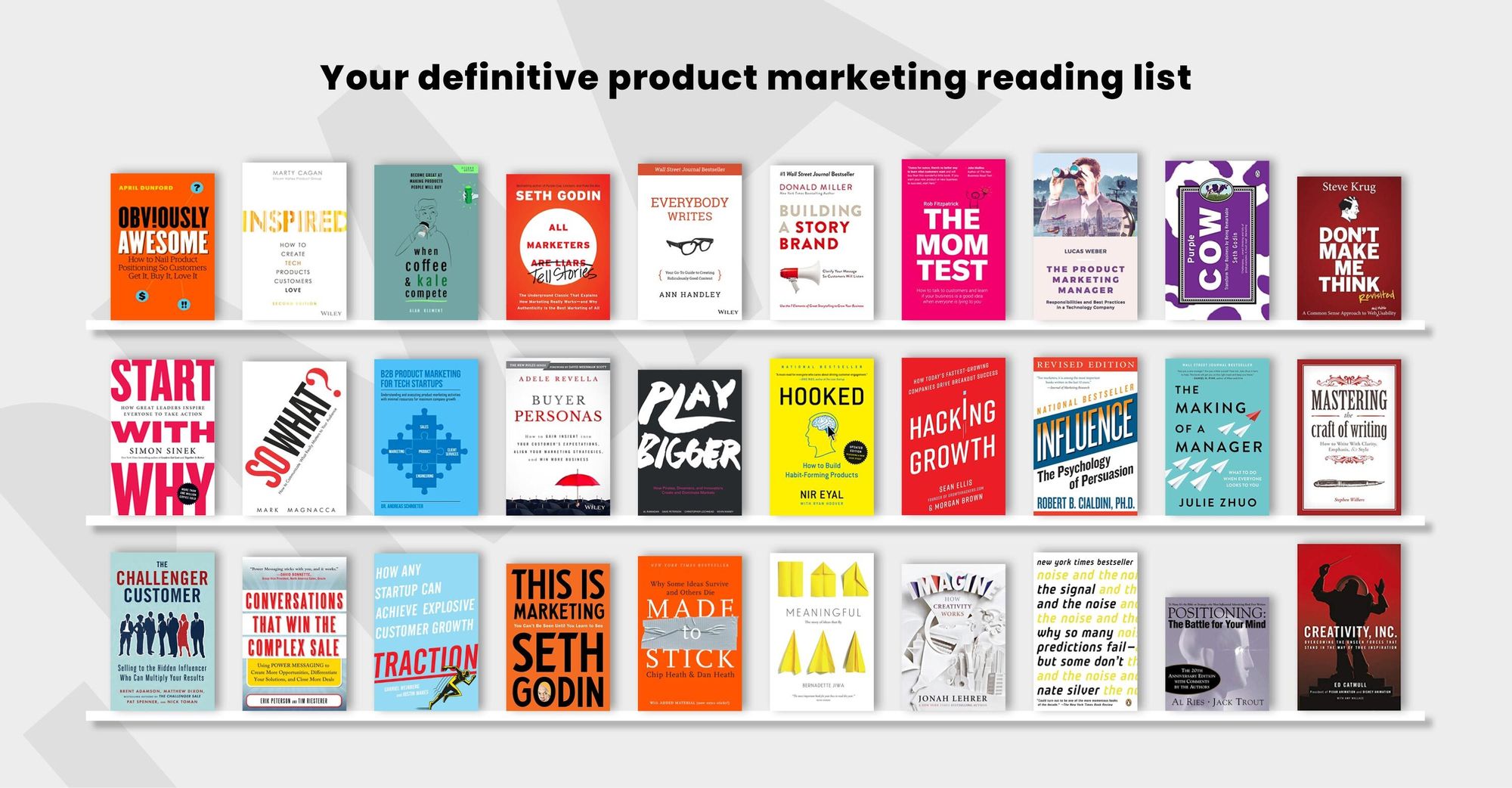Sales writing isn’t a skill everyone has in their marketing arsenal, but for product marketers in particular, it should be; sales writing impacts audience engagement, and engagement impacts your direct sales.
In this article, we’ll focus on key topics relating to the art of sales writing, including:
91% of B2B marketers use content marketing, meaning there's a lot of competition when it comes to trying to sell a product to your target audience. With this in mind, you want to ensure that your writing techniques are on top form to help you stand out from the copywriting crowd.
This sentiment is echoed by Eric Moeller, Director of Product Marketing at Sage, who told us:
“Sales copywriting requires a very specific set of skills that I personally think every marketer should have. I would argue that most marketers haven't really invested in their sales copywriting skills as they should, and clearly need to be as effective as possible.”
How to write impactful content
Sales writing is all about developing a relationship with your customers. In 2020, 43% of people said that their team’s biggest challenge was developing content that resonates with their target audience.
So, how do we connect with our audience? There are quite a few handy techniques that we can use within our sales writing that can help develop this relationship with our readers.
Here are a few to think about:
Storytelling
This is a beautiful way of engaging the reader and keeping them interested in what you have to say.
Don’t be afraid to bridge the gap between business and consumer by using a relevant narrative. People are less likely to want to unsubscribe if they feel they have personally connected with the content you have produced.
Here’s some questions to think about when improving your storytelling:
- Who is my target audience?
- What is the key message I want to convey?
- What is the specific story that I want to tell?
- How do I create the biggest impact on them emotionally?
- Why am I writing this? What will my call to action (CTA) be?
Have a look at our article on the what, why, and how of storytelling for a more detailed understanding of the concept.
Check out our podcast with Elliot Rayner to hear more about how you can improve your storytelling techniques.

Keep it concise
In a world of ever-dwindling attention spans, concise writing is key to keeping people reading. Waffles are for breakfast, folks!
Make a point and stick to it
This goes hand-in-hand with the keeping-it-concise thing. Once you start going off on a tangent and losing your point, your audience will drift with you.
Know who your audience is
Gathering data around your target audience is critical to truly understand what content you need to provide. Have a look at our article on the A to Z of Market Research to get an idea of what you need to be looking for.
Bryony Pearce, Product Marketing Alliance’s content manager, shares her experience with common sales writing mistakes and offers up 11 tips and tricks on how to improve them in this helpful article.

Jackelyn Keller, Head of Market Intelligence and Product Strategy at Samsung Ads, specializes in Global Product Marketing. In this article, she takes a deep dive into how to simplify your messaging techniques to create the biggest impact for your target audience.

With her experience with sales writing, overseeing a 39% year-on-year growth of messaging, we had to speak to Head of Product Marketing at LinkedIn, Jennifer Bunting on what steps product marketers can take to improve the quality of their messaging.
Here’s some advice she had to offer:
“I would say, be as human to human as possible. I think B2B marketing in particular gets this bad rap as being boring or sterile or less imaginative. But at the end of the day, a B2B decision-maker making a purchase is a human being as well.”
Speaking specifically about her experience with LinkedIn sales writing, she added:
“They [the audience] also a human being when they're still on LinkedIn and so they like to be surprised in pleasant ways, informed, entertained, all that stuff. When you're writing your messages, whether you want that to live on your inbox, on LinkedIn, or in the newsfeed, if you can make your point quickly, and provide value and make it interesting for that person.
“So that inbox, you feel like you're going to be talking to another person. It can come from you as a person, or it can come from a spokesperson of your brand or can come from the brand itself, but making use of that subject line space to kind of grab their attention in a way they might not be expecting but still professionally relevant.
“And then give them some information within that space that is helpful and interesting. I think if you can have that mix in the message, then you're going to have a higher chance of someone clicking on your call to action button.”
Again, it all comes back to being attention-grabbing, being concise, and remembering that you’re talking to a fellow human. Most of the sales writing guides you read will continue to emphasize the importance of these ideas.
Listen to more of what Jennifer had to say in our podcast:

Do lots of research and practice practice practice!
The hardest part is finding the right resources to help you get going on whatever you’re writing about. But the best way to get people to listen to you is to be confident in what you’re saying. Make sure that you’ve done a lot of research surrounding the content you’re going to produce.
The next trick is incorporating these techniques into your sales writing, and the ideal way to do this is to just… do it. The only way anyone properly learns anything is by practicing what they’ve discovered. What better way to practice your sales writing than just getting stuck in?
Eric Moeller gave a bit of insight into how he got started, saying:
“I started to look at the different books that people were referencing in these podcasts and it became a bit of an obsession.
“You do find as you start to read a lot of these books that they talk about many of the same kinds of ideas, but there are all kinds of different little tips and tricks you can pick up from different ones.”
Check out our reading list to find some quality content writing books to get you started 📖

Monkey see monkey do. Other than books, the best way to find the perfect references is by reading other sales content.
Have a look at some of our articles, guides, reports and podcasts within the PMA Content Hub to see how we put our techniques into practice.
Common mistakes in sales writing
There are many mistakes within sales writing that are often overlooked, but easily avoided. For example, when selling your product, it’s easy to just assume that your reader knows what you’re talking about; using too much company jargon can be really off-putting and alienating to a customer.
A top tip would be to do your market research. Get to know your target market to see what language they use when talking about certain products and let it influence how you communicate back to them.
We asked Eric if he had noticed any common mistakes that are often made within company messaging, and here’s his advice:
“I think, a lot of times, the challenge we have, when we’re writing sales copy, is that we want to talk about what we know, rather than what the customer or the prospect cares about. It's easy with a new release to say, ‘Hey, we're introducing features a, b, and c and that's the great thing about this new release’.
“That's really focusing on the wrong thing; this is what we care about but what we want to really focus on is: what is it the prospect cares about? I think, if you have done the work in advance in terms of having user personas, buyer personas [...] if you really understand that, you understand what the pains are, and also what the aspirations of your customers are.
“Sometimes there's an emphasis on, let's keep iterating these features. But if we're not getting to the heart of what's a really painful problem for the customer, we might continue to have mediocre success in the market.”
Many of the mistakes we make when writing marketing content are based on not knowing our target audience, making the language inaccessible, or not personalizing our writing enough. All of these have an alienating effect on the reader.
Again, what we are trying to do is bridge that gap from ‘business to human’ to the more compelling and successful ‘human to human’ approach.
Hear more from Eric Moeller in this episode of the Product Marketing Insider podcast:

How to reduce word count
When it comes to sales writing, less is more. It is very easy to fall into the trap of complicating sentences and whole paragraphs to sound more intelligent. But it actually tends to make everything more difficult to read and understand.
Reducing the word count is a nice trick to balance the complexity of your writing with the actual content. Here are some tips that will help you:
Read your work aloud
Sometimes when you’re reading through your work, your brain is skipping over words to make it sound more fluid. Reading your work aloud forces you to recognise when a sentence is too wordy and you can then take the steps to cut it down.
Remove the unnecessary bits
Often, we don’t actually need to put in every single word we write to get the point across.
Take this example:
“I am going to the shops in order to buy the essential ingredients we need for dinner tonight.”
Or, “I’m going to the shops to buy tonight’s dinner ingredients’.
Okay, it’s a bit put on for the example, but you can see that the second sentence says the same thing and in fewer words.
Combine your sentences
It’s easy to repeat yourself. When you read back over what you’ve written, look at where you could combine sentences that convey the same message. This not only reduces word count, but also makes your content easier to read and digest.
Here’s another quick example of combining sentences:
“Ten PMMs joined the Product Marketing Alliance today. They ranged from 23-50 years old.”
Or, “Ten PMMs, aged 23-50, joined the Product Marketing Alliance today.”
This cut the sentence by four words, which doesn’t seem like much, but it all adds up. Using the acronyms for words helps too, as long as you’ve already established what each one means beforehand!
Ultimately, learning the techniques of sales writing can help you and your team develop a community with your consumer. Once you’ve developed that connection with your target audience, they will become more of an active consumer of your product, then ensuring your product gets more recognition and more sales.
There's more where this came from
Join us and 17,000+ others to learn more about how to improve your product marketing techniques. Become a part of the Product Marketing Alliance community today!



















 Follow us on LinkedIn
Follow us on LinkedIn




.svg?v=85af970283)